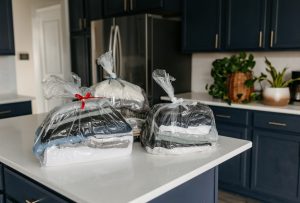Identify And Prevent Rodent Infection
In hot weather, the smell of dead mice can be unbearable and may require a hole in the wall to remove the sacrifice. Also, external parasites, such as fleas and mites, Desratização often leave dead rat corpses and can infect the entire house if the sacrifice is not removed immediately. Ceiling mice routinely travel up to 300 meters to get food.
You must take steps to exterminate the current population. Many bait stations or fishery products are available in local hardware stores and garden gardens. You may want to use a certified professional pest control operator.
Due to the potential danger of second generation anticoagulants for children and pets, these active ingredients are no longer allowed to be put up for sale to the general public. Some second-generation rodent pesticides that are now classified for use by agricultural producers can only be limited to applications in and around agricultural buildings. Cloths are designed to control rodents with rodents and rodent pesticides . These AIF restrictions allow manufacturers to produce, for sale to the general public, only mass of wax or gel or rat and mouse grafts that are packed in ready-to-use and disposal bait stations. Agricultural producers and professional pest control workers are able to obtain several types of rodent pesticides in various formulations, some of which are restricted by the use of pesticides.
If you are not sure about the species, look for mice at night with a bright lamp or hunt a little. The above illustrations show some of the main physical differences between the two types of mice, while Table 1 summarizes the determination of the characteristics. Mice are some of the most annoying and destructive rodents in the United States.
Norwegian mice eat a variety of foods, but especially prefer cereals, meat, fish, nuts and some fruits. When looking for food and water, Norwegian mice usually travel between 100 and 150 meters in diameter; They rarely travel more than 300 meters from their creams or nests. The average rat in Norway is 4 to 6 liters per year and can wean 20 or more successful offspring annually. Rodents owe most of their success in surviving their ability to adapt to different habitats.
Put the glue panels along the walls where the rodents move. Do not use it where people and pigs can reach, because they stubbornly adhere to anything that comes in contact with them. Stick panels lose their effectiveness in dusty areas, unless they are covered and extreme temperatures can also affect their treatment. To protect the glue from dust and turbulence, place it in the bait station or install a special protective cap designed to match the glue. Stick panels are more effective for collecting mice than mice. One of the most effective ways to control rodents in the city is containers.
Feeding rodents on anticoagulant taste does not usually die up to 2 to 6 days after a lethal dose. This slow procedure is a safety feature that allows the treatment of accidental intoxication before the onset of a serious illness. For Norwegian mice, set traps near the walls, behind things, in the dark corners and in places where signs of rats such as garbage can be seen. Place the traps along the wall so that they extend from the wall at an angle, the trigger reaching almost the wall. If the traps are set in parallel with the wall, they must be set in pairs to intercept rodents moving in any direction.
Fat markings are dark oil stains from rubbing the rat on surfaces such as travel routes, entry points and corners. These signs can be found in linear paths, including angles between walls and floors, along the foundation base and along tubes or electrical channels. A single mouse, mouse or rodent evidence (eg new waste, necrosis) justifies the trap, improved sanitation and rodent audit in the building. Critter Control specializes in rodent removal and control.

